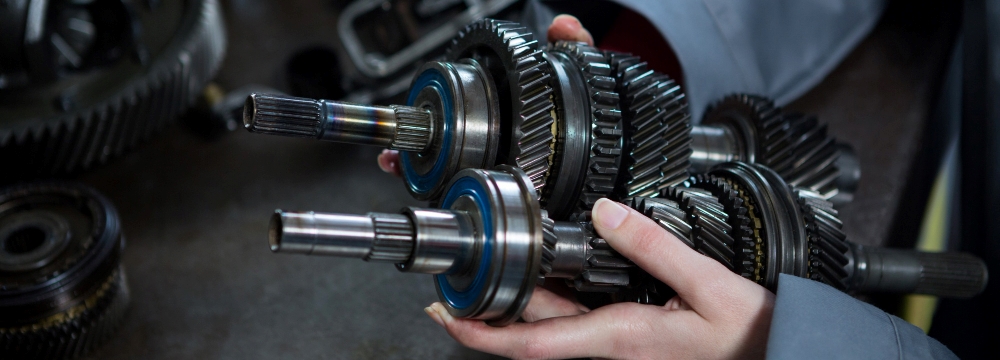 There’s nothing wrong with grooving and bouncing to the music while driving. However, those motions should be restricted to you (and your passengers) but not your engine or transmission. The equipment under your hood must stay securely fastened to their mounts to prevent excessive motion. Trust me, having components in the engine compartment or under your car move around all willy-nilly can be dangerous. Your vehicle’s transmission mounts may be bad and require auto repairs if you’ve noticed powertrain vibrations or heard clunking noises while driving.
There’s nothing wrong with grooving and bouncing to the music while driving. However, those motions should be restricted to you (and your passengers) but not your engine or transmission. The equipment under your hood must stay securely fastened to their mounts to prevent excessive motion. Trust me, having components in the engine compartment or under your car move around all willy-nilly can be dangerous. Your vehicle’s transmission mounts may be bad and require auto repairs if you’ve noticed powertrain vibrations or heard clunking noises while driving.
Understanding Transmission Mounts
Transmission mounts support the weight of the transmission. They attach the transmission to the engine and chassis, preventing it from moving around while changing gears, turning, and stopping. They also absorb powertrain vibrations and reduce noise, improving your ride quality and comfort. There is a transmission mount wherever the transmission makes contact with the frame. To prevent vehicle instability and damage to other engine components, schedule an auto repairs service to replace faulty transmission mounts right away.
Different Mount Types
There are many different types of transmission mounts. The kind of mount your car uses can vary based on its year, make, and model. Refer to your owner’s manual for the factory-recommended mount type for your vehicle. A few mounting types include:
- All metal
- Steel plate or bracket & rubber bushing
- Steel sleeve & urethane mount
- Fluid or gel-filled hydraulic mount
Transmission Mounts Lifespan
Generally, transmission mounts have a lifespan of 60,000 to 100,000 miles. However, the mount type and your vehicle model can affect their longevity. You may also want to consider environmental factors (like air quality, road salts, and extreme temperatures) that can accelerate wear and tear on the components.
Recognizing Bad Mounts
It’s important to recognize the signs of bad transmission mounts, as failing to replace them can lead to more expensive auto repairs down the road due to excessive powertrain vibrations.
Drivetrain Vibrations
When transmission mounts fail, vibrations from the working transmission travel through the chassis and into the vehicle’s cabin. Powertrain vibrations are not only disconcerting, but they can lead to vehicle instability.
Sagging Components
Sometimes, a broken transmission mount will create an uneven appearance in your engine. Look under the hood and under your car to see if your engine or transmission looks low, crooked, or otherwise out of place. If the answer is yes, schedule a diagnostic service immediately to rectify damaged transmission mounts and ascertain if there are any additional damages (like broken engine mounts or displaced wiring, belts, or hoses).
Clunking Noises
Thumping or clunking noises are common signs of worn-out transmission mounts. The sound is usually most noticeable during hard acceleration and braking or when changing gears.
Transmission Mounts Auto Repairs
Fisher’s Auto Service specializes in repairs for manual, automatic, and semi-automatic transmissions. Transmissions are complex and operate under harsh conditions. Our ASE-certified technicians deliver the highest standard of service to our customers. Let us inspect and diagnose your powertrain vibrations and clunking noises. We can quickly replace broken transmission mounts and perform any other necessary auto repairs on your vehicle.
Schedule Your Transmission Mounts Service
Fisher’s Auto Service provides inspection, maintenance, and repairs for all Asian, European, and Domestic SUV, truck, and car models. Scheduling factory-recommended maintenance appointments helps keep your vehicle running smoothly. Give us a call at (425) 823-4441 or check out our website to schedule your service appointment.

